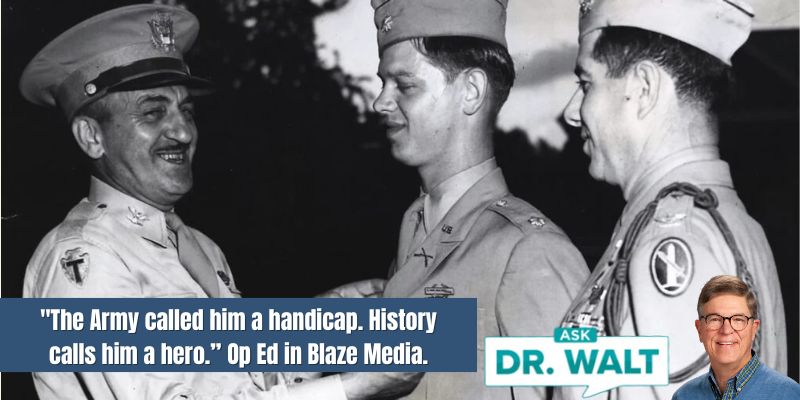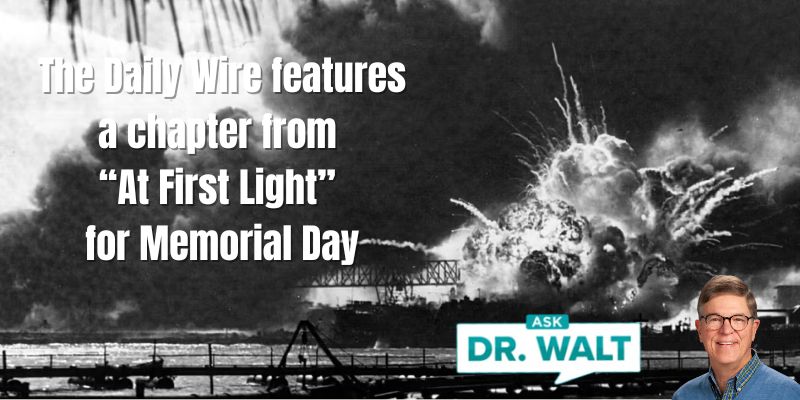
August 14, 1944 — Sailing for the southern France D-Day (Part 6)
August 14, 2024
August 15, 1944 — The southern France D-Day (Part 2)
August 15, 2024At dawn on D-Day, August 15, 1944, there were ships as far as the eye could see.[1] Onboard an LST in the Mediterranean Sea, Phil Larimore and Ross Calvert observed the smoke belching from stacks of the great American Naval fleet and could feel not only a steady calm among their men, but also feelings of rock-solid confidence.[2]

After winning the Battle of Anzio and liberating Rome, their guys were self-assured, self-confident, and self-reliant veterans. Phil was honored to fight with them—and glad he didn’t have to fight against them.
A cool breeze coming off the Mediterranean Sea tempered the warm August day. Troops sat beneath tarpaulins on the transport decks, sewing shoulder flashes to uniform sleeves or thumbing through A Pocket Guide to France.
It hardly seems that an invasion is on, Phil thought. Things are so quiet.
He looked at Ross, and he could tell that his buddy was thinking the same thing. They both retained a small bit of fear because those who didn’t have a healthy respect for combat were often as good as dead. In the final pre-invasion briefing, the officers made sure their men maintained the right balance of confidence and humility.
In the earliest hours of August 15, 1944, the massive Allied force crept toward sixteen narrow beaches along the Côte d’Azur, known for its glamorous beach resorts at Nice, Saint-Tropez, and Cannes, as well as the independent principality of Monaco. The 3rd Infantry Division was slated to hit three of the sixteen beaches to the west of these posh resorts. American soldiers were poised to land between Saint Raphael and Toulon, France’s largest naval port. This was known as France’s Provence region.
With the arrival of daylight, wave after wave of bombers began hammering their targets on and behind the beaches at 0550 hours. Not one German anti-aircraft battery responded. Instead, the defenders crouched in their bunkers and trembled as giant shockwaves ripped through the earth. At 0730 hours, the massive air onslaught waned because it was the U.S. Navy’s turn to unleash a deafening, destructive, devastating, and demoralizing naval bombardment from over 400 guns. A deluge of steel ripped through the beaches, the coastal highways, and the hills beyond.
Phil, Ross, and their men, watching from a ship railing, had front-row seats to an awe-inspiring spectacle of naval gunfire and air sorties on an unimaginable scale.
While the shelling continued, LCVPs[3] were released. But these were not the personnel-carrying Higgins boats, but rather drones laden with high explosives and radio-controlled from other specially designed landing craft. This was a new technique in the annals of warfare, seeing its first use in combat.
The Apex craft, as they were called, were radio-steered toward the smoldering coastline, where they successfully cleared lanes up to the deserted beaches.
As the Navy’s shelling began to fade at 0755 hours, over forty rocket ships, each armed with 700 rocket-launching tubes, swarmed toward the beaches through the open lanes, unleashing 30,000 flaming missiles. Fired in batches, these missiles hissed through the air like turbo-charged snakes.
Once they hit the earth, the missiles detonated mines, blasted barbed-wire entanglements, and unnerved the waiting, cowering enemy.
Over a mile offshore, tens of thousands of infantrymen were unloading from hundreds of LCIs and LCTs onto LCVPs manned by naval personnel.
Phil and his platoon climbed down a rope cargo net on the side of their ship and stepped into a waiting Higgins boat. There were two Jeeps secured in Phil’s landing craft, each with a small trailer attached and loaded with ammunition and engineering supplies.[4]
~~~~~
[1] Nearly 900 U.S. naval vessels plied ten routes of the Mediterranean, converging within striking distance of southern France. The great fleet, made up of nine aircraft carriers, eighty-seven destroyers, and 370 large landing ships, were all committed to safely landing some 150,000 troops, including 41,000 French soldiers. Everything each GI owned was in their packs, which brought the average rifleman’s combat load to over 68 pounds, far beyond the 43 pounds recommended for assault troops. Each soldier received an American flag armband and two packs of Lucky Strike cigarettes.
[2] Larimore, At First Light, 121.
[3] LCVPs stands for landing craft, vehicle, personnel, but they were more commonly referred to as “Higgins boats.” Made of reinforced plywood with a thick metal ramp on the flat bow that could be lowered, each thirty-six-foot-long boat could carry thirty-six men and their gear, or one Jeep and twelve men, or two Jeeps and drivers. The Higgins boats could speed toward the shore at 12 knots.
[4] Larimore, At First Light, 121-123.
In case you haven’t read or listened to Dad’s book, you can learn more or order it here.
© Copyright WLL, INC. 2024.




